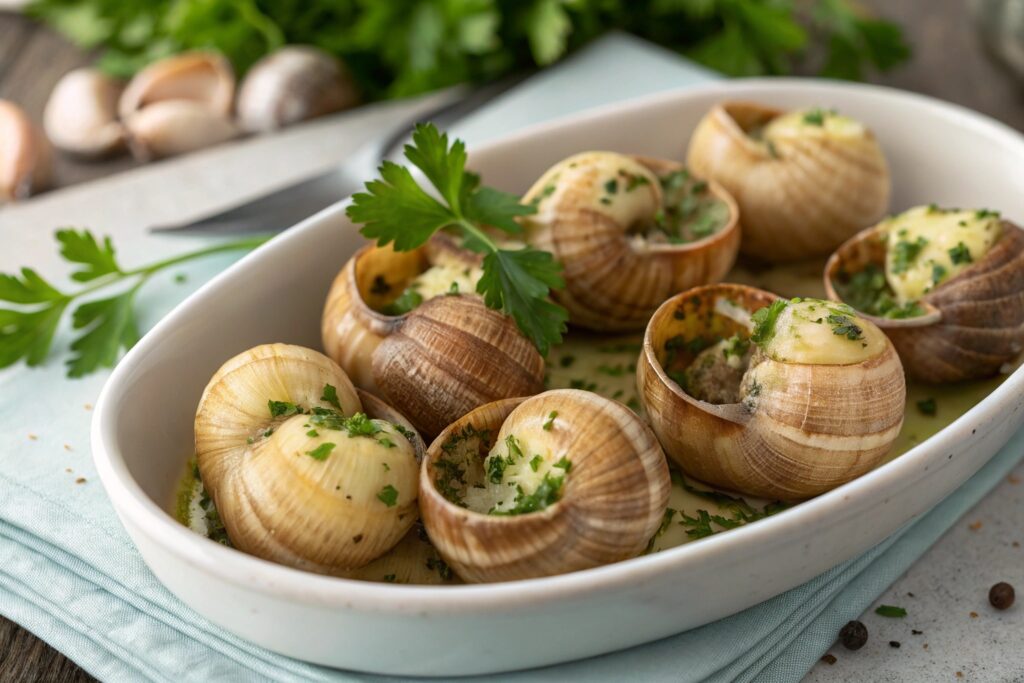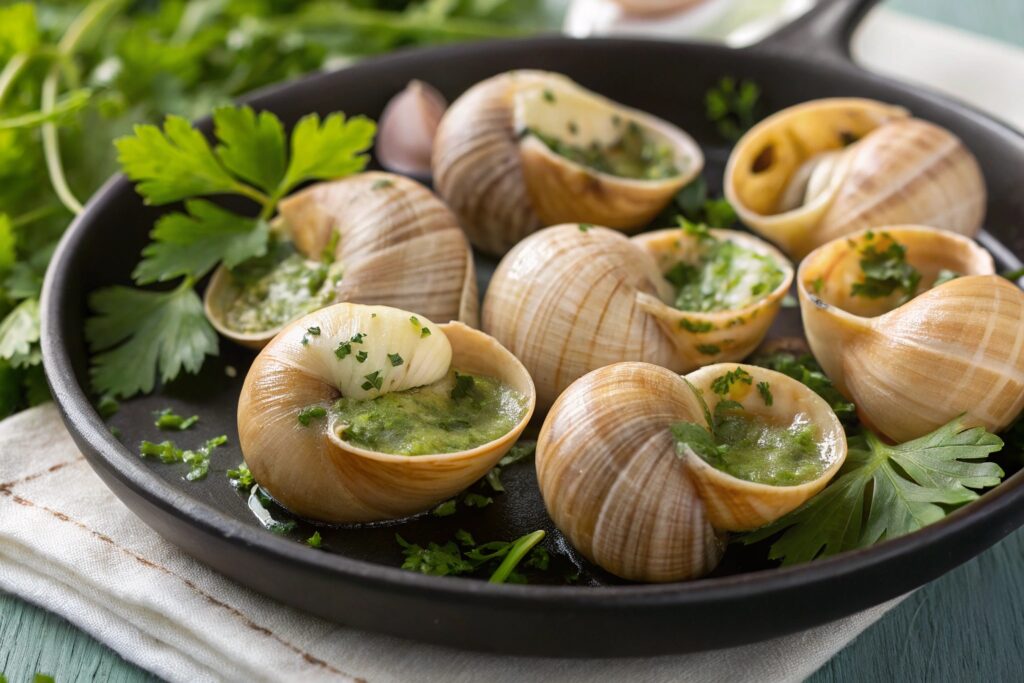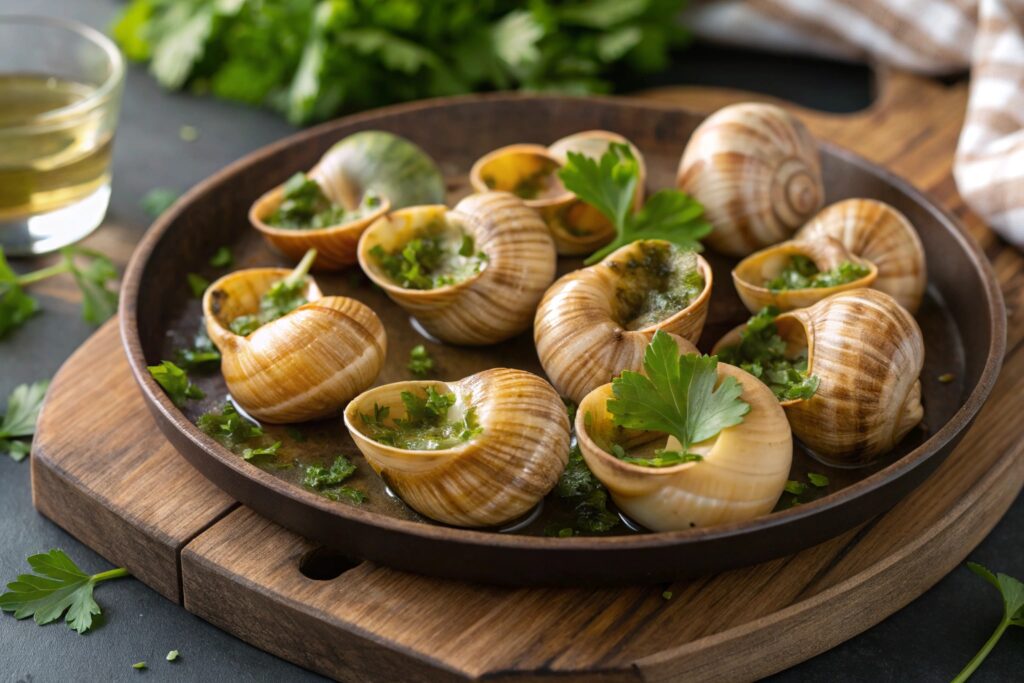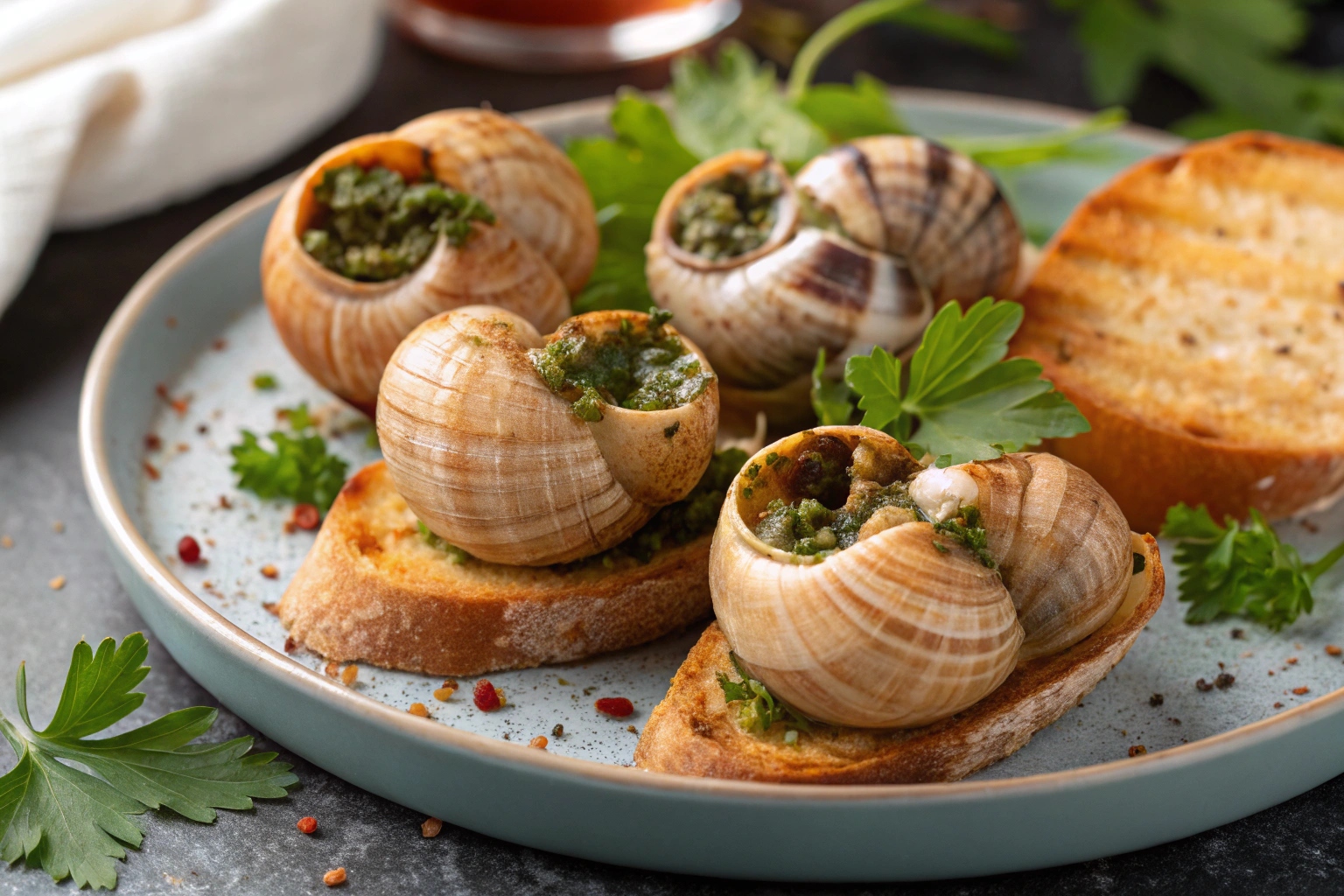Escargot, or snails, is a dish that has captured the hearts and taste buds of food enthusiasts across the globe. Known for its indulgent garlic-parsley butter sauce and tender texture, this French delicacy represents the epitome of culinary elegance. While escargot is often associated with fine dining, it’s surprisingly approachable for home cooks, requiring just a few simple ingredients and tools. This guide will not only walk you through the steps of a classic escargots recipe but also delve into its rich history, variations, and tips to elevate your cooking experience. Whether you’re a seasoned chef or a curious beginner, this article has everything you need to create a memorable escargot dish at home.
History and Origins of Escargot
Escargot has a history that stretches back thousands of years, originating in ancient Rome where snails were prized as a gourmet delicacy. Roman aristocrats developed intricate recipes for snails, incorporating herbs and wine to create dishes that showcased their culinary sophistication. Over time, this tradition spread across Europe, with the French elevating escargot to its current status as a cultural and gastronomic icon.
The Burgundy region of France is particularly renowned for its escargot dishes, thanks to its abundant vineyards that produce the white wine integral to many recipes. By the 19th century, escargot had become a staple of French bistros and fine dining establishments. Today, escargot is celebrated worldwide as an emblem of French cuisine, beloved for its luxurious flavors and elegant presentation.
| Timeline of Escargot History | Key Developments |
|---|---|
| Ancient Rome | Snails as a delicacy |
| Middle Ages | Spread across Europe |
| 19th Century | Popularized in France |
| Modern Day | Global culinary icon |
Culinary Significance of Escargot

Escargot’s allure lies in its ability to transform a humble ingredient into a decadent dish. The snails, often of the Helix pomatia or Petit Gris variety, have a mild, earthy flavor that pairs perfectly with robust ingredients like garlic, butter, and parsley. Escargot is not only delicious but also nutritious, offering high levels of protein, iron, and magnesium.
In French culture, escargot is more than just food; it’s a shared experience. From carefully cleaning and preparing the snails to savoring them with crusty bread and wine, every step reflects the meticulous care and appreciation for fine cuisine. Escargot is commonly served during holidays, special occasions, and intimate dinners, symbolizing sophistication and indulgence.
| Nutritional Benefits of Escargot (per 6 snails) | Value |
|---|---|
| Calories | 80 |
| Protein | 14g |
| Fat | 2g |
| Iron | 15% RDI |
Essential Ingredients for Escargot

Creating a delicious escargot dish requires the freshest and highest-quality ingredients. Below is a detailed list of what you’ll need:
- Canned escargot or fresh escargot: Look for 24 snails, ensuring they are cleaned and ready to cook.
- Unsalted butter: Use 1 cup of room-temperature butter for a creamy, rich base.
- Garlic cloves: Mince 6-7 cloves for bold, aromatic flavor.
- Fresh parsley: Finely chop 3 tablespoons of Italian parsley to complement the garlic.
- White wine: Add 2 tablespoons of dry wine to enhance the sauce’s complexity.
- Kosher salt and black pepper: Season to taste for balance.
- Baguette slices: Serve alongside the dish to soak up the flavorful sauce.
Optional ingredients include lemon juice, shallots, and grated Parmesan for added richness.
Tools Needed for Preparation
To achieve the best results, gather the following tools:
- Escargot dish or baking dish: A 12-hole ceramic escargot plate is ideal for presentation.
- Snail forks and tongs: These small utensils make serving and eating escargot easy.
- Food processor: Essential for blending the garlic-parsley butter to a smooth consistency.
- Mixing bowl: For combining and seasoning ingredients.
- Paper towels: To pat the snails dry before cooking.
- Preheated oven: Set to 375°F (190°C) to bake the escargot to perfection.
Classic French Garlic-Parsley Butter Escargot
Step-by-step Preparation
- Prepare the Butter Mixture:
- In a food processor or mixing bowl, combine the unsalted butter, minced garlic, fresh parsley, white wine, Kosher salt, and black pepper. Blend until smooth and creamy.
- Prepare the Snails:
- If using canned escargot, drain and rinse them under cold water. Pat them dry with a paper towel to remove excess moisture.
- For fresh escargot, ensure they are thoroughly cleaned and pre-cooked according to preparation guidelines.
- Assemble the Dish:
- Place a small dollop of the garlic-parsley butter mixture into each hole of the escargot dish or a layer in a baking dish.
- Nestle one snail into each hole or butter layer and top with an additional dollop of the mixture.
- Bake to Perfection:
- Transfer the dish to a preheated oven and bake for 10-12 minutes, or until the butter is bubbling and golden brown.
- Serve Hot:
- Serve immediately with warm baguette slices to soak up the garlic-parsley butter sauce.
Escargot Variations Without Shells
Ingredients and Preparation
For a no-shell option, baked escargot with mushroom caps is an excellent alternative:
- Ingredients:
- Escargot (24 snails)
- Large mushroom caps (24)
- Garlic-parsley butter
- Grated Parmesan cheese (optional)
- Preparation:
- Clean the mushroom caps and remove their stems.
- Place a snail into each mushroom cap and top with garlic-parsley butter.
- Sprinkle Parmesan cheese on top for added flavor.
- Bake at 375°F for 10-15 minutes, or until the mushrooms are tender and the butter is bubbling.
Unique Serving Ideas
Present the baked mushroom caps on a decorative platter, garnished with fresh parsley and served alongside a crisp green salad for a modern twist.
Spicy Escargot with Chili and Herbs

How to Make It
- Prepare the Spicy Butter Mixture:
- Combine unsalted butter, minced garlic, red chili flakes, smoked paprika, and fresh parsley in a mixing bowl.
- Coat and Bake:
- Toss the snails in the spicy butter mixture and arrange them in an escargot dish or baking dish.
- Bake in a preheated oven at 375°F for 10-12 minutes.
- Garnish and Serve:
- Garnish with additional parsley and serve with crusty French bread.
Pairing Recommendations
This variation pairs well with a chilled Sauvignon Blanc or a light beer, both of which balance the dish’s spicy richness.
Escargot Casserole with Pasta
Ingredients and Cooking Process
- Ingredients:
- Escargot (24 snails)
- Cooked pasta (e.g., linguine or fettuccine)
- Garlic-parsley butter
- Heavy cream
- Grated Parmesan cheese
- Cooking Process:
- Sauté the escargot in garlic-parsley butter over medium heat.
- Add heavy cream and grated Parmesan to create a rich, creamy sauce.
- Toss the cooked pasta in the sauce and transfer it to a greased casserole dish.
- Bake at 350°F for 10 minutes and serve immediately.
Presentation Tips
Garnish with fresh parsley and serve in individual ramekins or on a decorative plate for an elegant touch.
Vegetarian-Friendly Escargot Alternatives
Ingredients List
- Large mushroom caps or firm tofu cubes
- Garlic-parsley butter
- Breadcrumbs (optional)
Cooking Method
Replace escargot with mushroom caps or tofu cubes, following the same steps as the classic recipe. These alternatives provide a similar texture and absorb the flavors beautifully.
Nutritional Information for Escargot
Escargot is both indulgent and nutritious, offering high protein with minimal fat. However, the addition of butter and bread can significantly increase the calorie count. Below is a breakdown of the nutritional profile:
| Component | Per Serving (6 snails) |
|---|---|
| Calories | 80 |
| Protein | 14g |
| Fat | 2g |
| Iron | 15% RDI |
Expert Tips for Cooking Escargot
- Quality Ingredients: Use fresh herbs, high-quality butter, and properly cleaned snails for the best results.
- Serve Immediately: Escargot is best enjoyed hot, straight from the oven.
- Experiment with Flavors: Add herbs like tarragon or chives for unique variations.
Common Concerns When Cooking Escargot
How to Source Escargot Safely?
Opt for canned or frozen escargot from reputable suppliers. Fresh snails should be purchased from trusted vendors and thoroughly cleaned before use.
Can Escargot Be Frozen?
Yes, cooked escargot can be frozen for up to three months. Reheat in the oven to preserve its texture and flavor.
FAQs
What Type of Wine Pairs Well with Escargot?
Dry white wines like Chardonnay or Sauvignon Blanc complement the dish’s buttery richness.
How to Clean and Prepare Escargot?
Fresh snails should be soaked in cold water and vinegar to remove impurities, then boiled for 10-15 minutes before use.
Conclusion and Encouragement to Try at Home
Escargot is a culinary gem that combines tradition, flavor, and artistry. With this guide, you can recreate the magic of a French bistro in your own kitchen. From the classic garlic-parsley butter recipe to innovative variations, escargot offers endless possibilities for indulgence. So, gather your ingredients, follow these steps, and enjoy the rewarding experience of crafting this timeless dish. Bon appétit!
Read also our Lobster pot pie recipe

